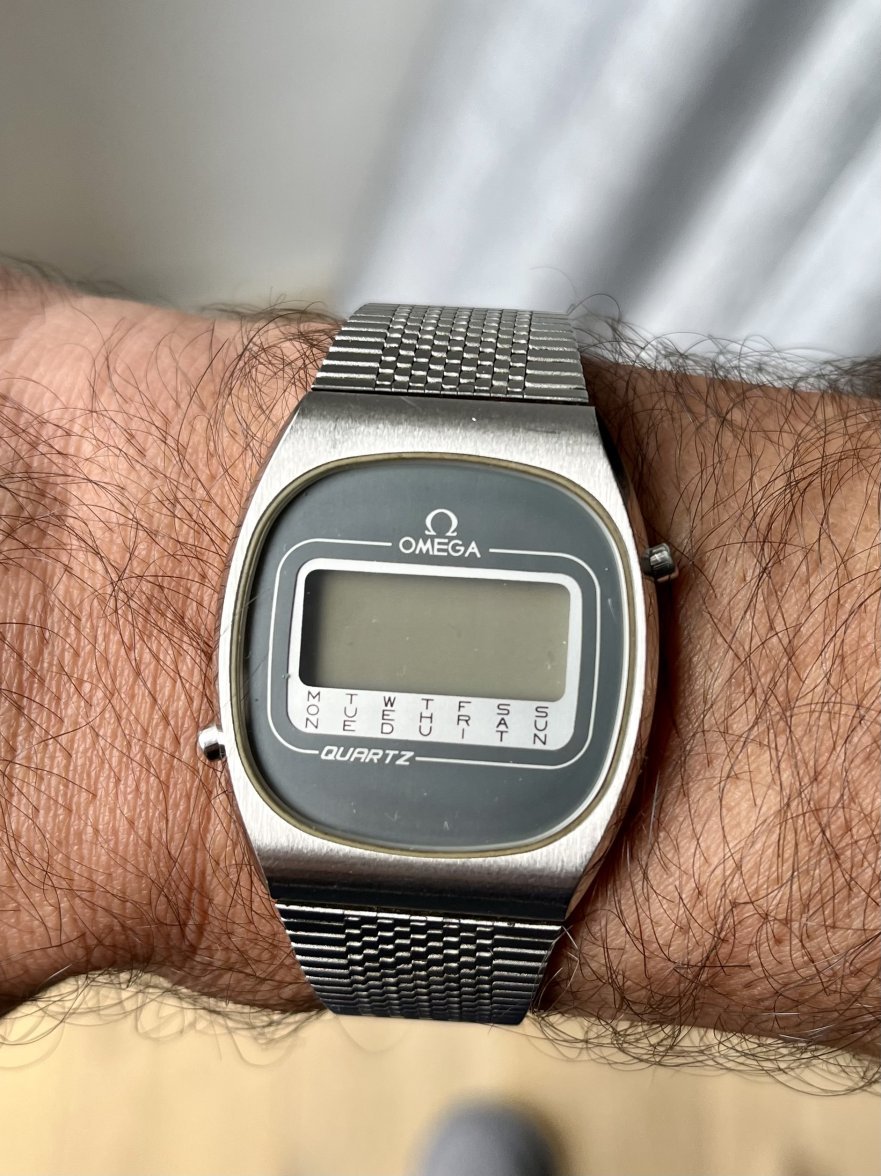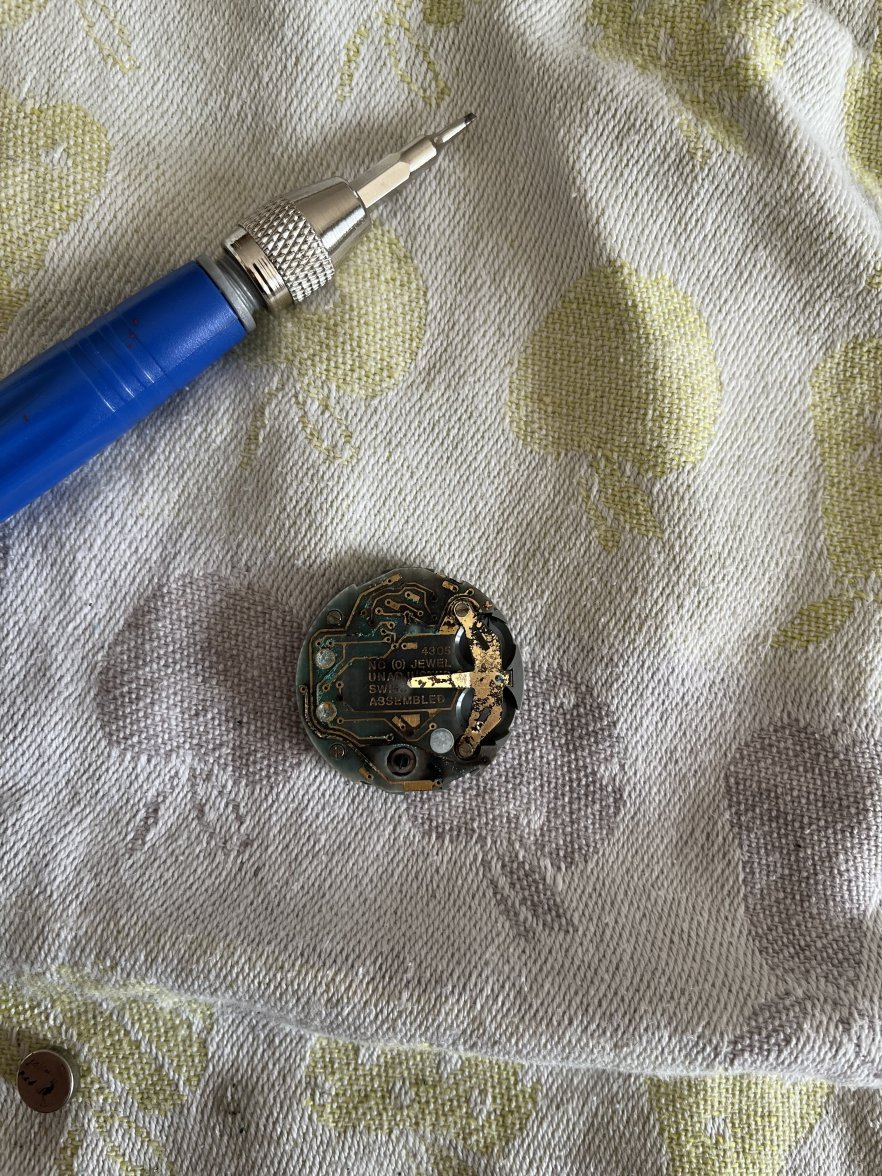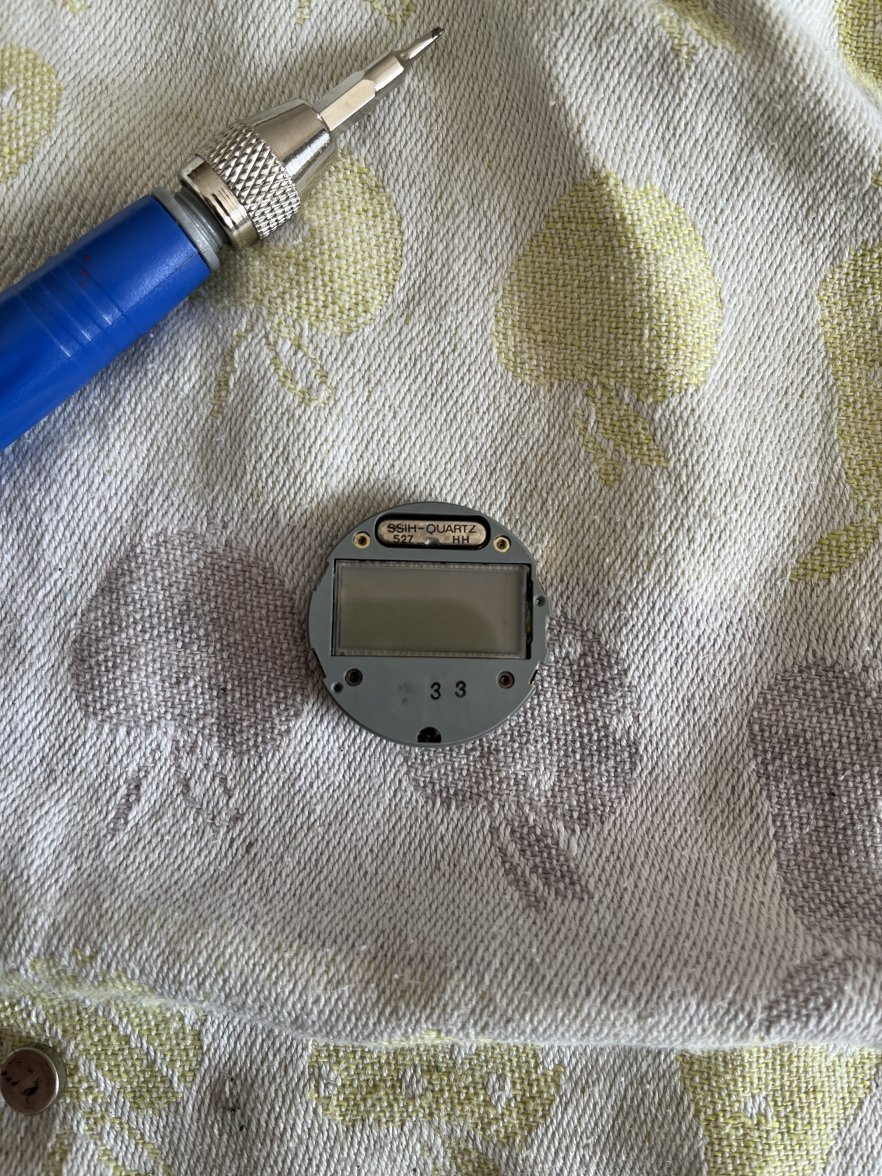Omega Quartz LCD 1616
byunjoe
·I vaguely remember seeing an etsy listing for one of these in working condition but a worse case. I suppose you could use it as a donor. I saw it sometime early 2 months ago so if I find it again I'll link it.
sheepdoll
·Replace the movement with an 'Arduino?'
I do find it somewhat Ironic that my interest in watchmaking lead me to work with surface mount microelectronics. What goes into these old electronics is fairly simple. The issue is that custom chips were used. Often mounted direct to the PC board. I went through a whole phase as I learned how the glass displays worked. A local surplus store had some stop watch displays. The tricky part is where the glass contacts the printed circuit. The best designs use a rubber contact strip. Some of the others use basically conductive ink silk screened onto tape. In theory the silicon should be fairly robust. I have chips that are nearly 50 years old. Most failures are likely to be in the support components. Audio gear is subjective to the capacitors drying out. I think watches tend to use ceramic caps.
One would probably need a logic analyzer to reverse engineer the electronics, although they are for the most part something called a 'binary divider.'
The bane of such devices is electrostatic discharge which was not well understood in the 1970s. Apple nearly failed with the Apple /// which was 100 percent DOA on first shipment due to static issues. So that probably precludes keeping a lot of these running.
I still have the stop watch projects somewhere on the back burner, which is so far back it no longer burns, and is quite cold. I guess a better analogy would be that such are buried somewhere out in the back 40.
-j
I do find it somewhat Ironic that my interest in watchmaking lead me to work with surface mount microelectronics. What goes into these old electronics is fairly simple. The issue is that custom chips were used. Often mounted direct to the PC board. I went through a whole phase as I learned how the glass displays worked. A local surplus store had some stop watch displays. The tricky part is where the glass contacts the printed circuit. The best designs use a rubber contact strip. Some of the others use basically conductive ink silk screened onto tape. In theory the silicon should be fairly robust. I have chips that are nearly 50 years old. Most failures are likely to be in the support components. Audio gear is subjective to the capacitors drying out. I think watches tend to use ceramic caps.
One would probably need a logic analyzer to reverse engineer the electronics, although they are for the most part something called a 'binary divider.'
The bane of such devices is electrostatic discharge which was not well understood in the 1970s. Apple nearly failed with the Apple /// which was 100 percent DOA on first shipment due to static issues. So that probably precludes keeping a lot of these running.
I still have the stop watch projects somewhere on the back burner, which is so far back it no longer burns, and is quite cold. I guess a better analogy would be that such are buried somewhere out in the back 40.
-j
Ocean
·I know that these repair LED watches..maybe they can also help you with the LCD..
https://pulsarledtime.com
https://pulsarledtime.com
kaplan
·Jonathan40
·
Forum community at it’s best. Nice one for the OP.
sheepdoll
·
Oooh, another rabbit hole to look for parts from ...
ChrisKuppel
·I vaguely remember seeing an etsy listing for one of these in working condition but a worse case. I suppose you could use it as a donor. I saw it sometime early 2 months ago so if I find it again I'll link it.
ChrisKuppel
·Replace the movement with an 'Arduino?'
I do find it somewhat Ironic that my interest in watchmaking lead me to work with surface mount microelectronics. What goes into these old electronics is fairly simple. The issue is that custom chips were used. Often mounted direct to the PC board. I went through a whole phase as I learned how the glass displays worked. A local surplus store had some stop watch displays. The tricky part is where the glass contacts the printed circuit. The best designs use a rubber contact strip. Some of the others use basically conductive ink silk screened onto tape. In theory the silicon should be fairly robust. I have chips that are nearly 50 years old. Most failures are likely to be in the support components. Audio gear is subjective to the capacitors drying out. I think watches tend to use ceramic caps.
One would probably need a logic analyzer to reverse engineer the electronics, although they are for the most part something called a 'binary divider.'
The bane of such devices is electrostatic discharge which was not well understood in the 1970s. Apple nearly failed with the Apple /// which was 100 percent DOA on first shipment due to static issues. So that probably precludes keeping a lot of these running.
I still have the stop watch projects somewhere on the back burner, which is so far back it no longer burns, and is quite cold. I guess a better analogy would be that such are buried somewhere out in the back 40.
-j
ChrisKuppel
·I know that these repair LED watches..maybe they can also help you with the LCD..
https://pulsarledtime.com
ChrisKuppel
·
Thank you very much, i already asked them a few days ago and they have only the circuit - i think i need the whole movement with lcd and all, don’t i? Can i (or maybe better my watchmaker ) put the circuit and the lcd (which is functioning i think) part together?
sheepdoll
·Thank you very much, i already asked them a few days ago and they have only the circuit - i think i need the whole movement with lcd and all, don’t i? Can i (or maybe better my watchmaker ) put the circuit and the lcd (which is functioning i think) part together?
While I encourage self sufficiency in watchmaking, Opening a watch even to change a battery is risky as it subjects the watch to contaminates (dust and small fibers from clothing aka lint.) The other risks are that sometimes special tools are needed, because there are really no 'user serviceable' parts inside.
-j
ChrisKuppel
·Probably simplest to just to have your watchmaker swap the movement. If the LCD is good then they could simply swap the electronics.
While I encourage self sufficiency in watchmaking, Opening a watch even to change a battery is risky as it subjects the watch to contaminates (dust and small fibers from clothing aka lint.) The other risks are that sometimes special tools are needed, because there are really no 'user serviceable' parts inside.
-j


